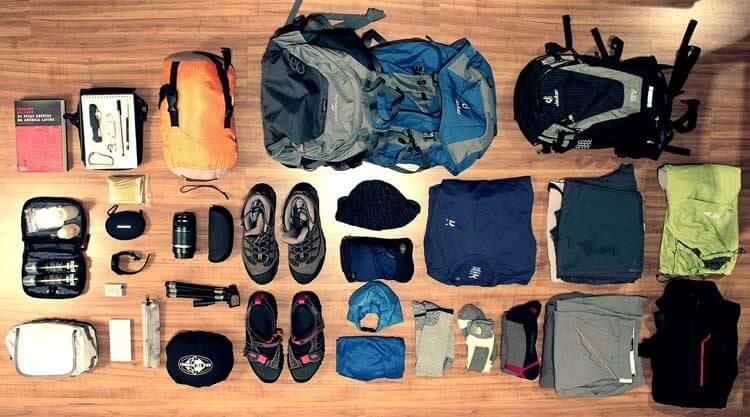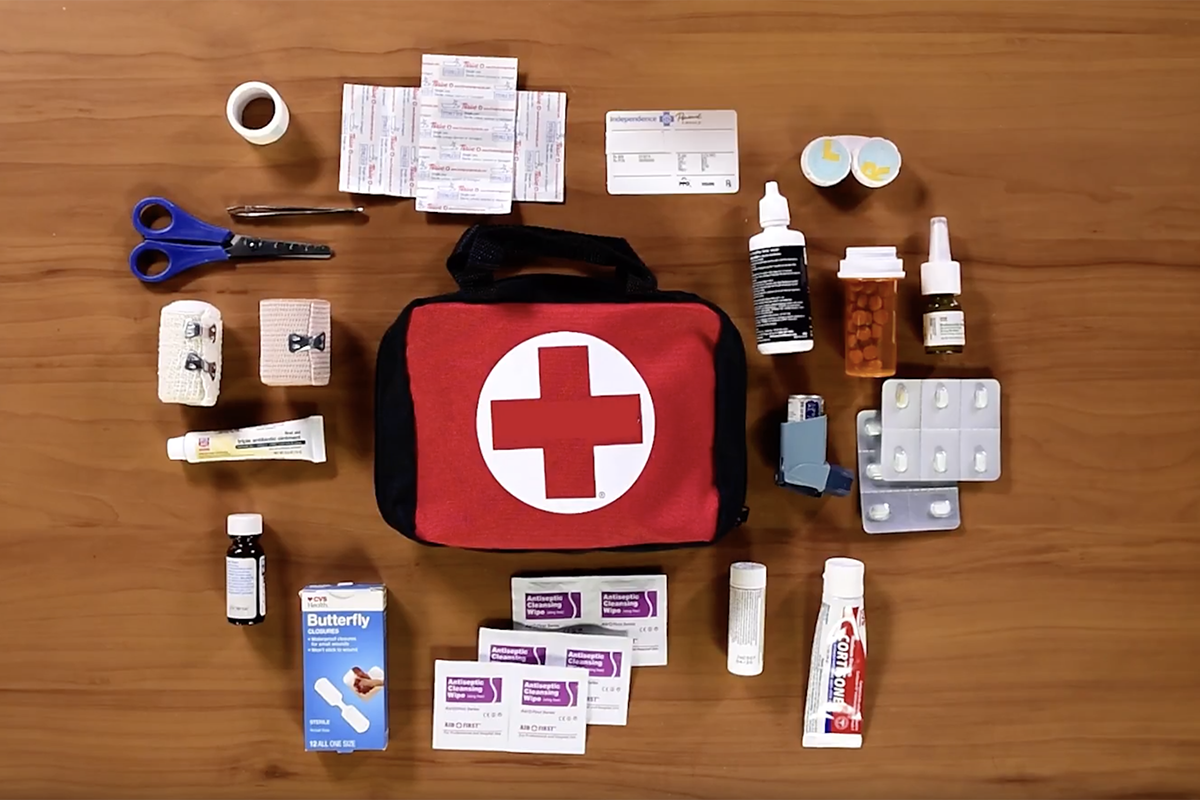Embarking on a trekking tour requires thoughtful preparation and packing. The key to a successful journey lies not only in your physical readiness but also in having the right gear. Start with a durable, ergonomically designed backpack, one that can comfortably hold all your essentials while providing easy access to items you'll need frequently. Clothing is a major consideration; you should pack lightweight, breathable layers that can be easily added or removed as temperatures fluctuate. Waterproof and windproof jackets are indispensable, as the weather in mountainous areas can be unpredictable. Equally important are your footwear choices; sturdy, comfortable hiking boots with good grip will keep your feet protected and prevent slips and falls.
Don't forget the significance of a high-quality sleeping bag, suitable for the temperatures you'll encounter, along with a lightweight tent if you plan to camp out. A compact, portable cooking system and water purification tablets or a water filter will ensure you stay nourished and hydrated. Navigation tools like a map, compass, or GPS device, along with a fully charged power bank and solar charger, are crucial for staying on track and keeping your devices powered. Safety should never be an afterthought, so include a first-aid kit, a multi-tool or knife, and a headlamp or flashlight with extra batteries.
Personal items should also be carefully selected; sunscreen, insect repellent, and personal hygiene products are must-haves, along with a quick-dry towel and biodegradable soap. Lastly, don't overlook the importance of lightweight, high-calorie food items and snacks to maintain energy levels during your trek. By adhering to this ultimate packing list, you can ensure that you're well-prepared to face the challenges and joys of your next trekking tour, leaving you free to fully immerse in the beauty and solitude of nature.
"The Ultimate Packing List for Your Next Trekking Tour," the goal is to find comprehensive and reliable information that covers all essentials for a successful trekking adventure. The best keywords should be broad enough to capture the wealth of information available but specific enough to yield useful, targeted results.
Trekking Packing List:

Trekking in Nepal is an experience like no other, offering unparalleled views of some of the world's highest peaks and a deep dive into rich cultural landscapes. Given the varied terrain, altitude, and climate conditions you'll encounter, crafting a Nepal-specific trekking packing list is essential for ensuring a comfortable, safe, and enjoyable journey. Here’s a curated packing list tailored for the unique challenges and wonders of trekking in the Himalayas:
Footwear
Hiking Boots: Waterproof and ankle-supporting boots are a must, along with several pairs of woolen or synthetic blend socks to prevent blisters.
Clothing
Layered Clothing: Include thermal base layers, fleece or woolen mid-layers, and a waterproof and windproof outer layer. Temperatures can vary widely from day to night and with altitude changes.
Accessories: Don’t forget hats (both for sun and cold), gloves, and neck gaiters for added warmth.
Safety and Navigation
Maps and Compass/GPS Device: While guides are invaluable, having your own navigation tools is a good safety measure.
Headlamp and Batteries: Essential for early morning starts or navigating in the dark.
Travel Insurance: Ensure it covers high-altitude trekking.
Hydration and Nutrition
Water Purification Tablets or a Water Filter: Safe drinking water is essential, and while bottled water is available, it’s expensive and environmentally unfriendly.
High-Calorie Snacks: Energy bars, trail mix, and dried fruits are lightweight and nutrient-dense options.
Personal Items
Sun Protection: High SPF sunscreen, lip balm, and sunglasses are vital against the strong UV rays.
First-Aid Kit: Include altitude sickness medication, plasters for blisters, and any personal medication.
Personal Hygiene Items: Biodegradable soap, toothbrush, toothpaste, and a quick-dry towel. Consider also wet wipes for times when water is scarce.
Extras
Camera: The breathtaking landscapes are worth capturing.
Journal: Documenting your experiences can be as rewarding as the trek itself.
Portable Solar Charger: Keeping your devices charged can be challenging in remote areas.
Trekking in Nepal is not just a physical endeavor but a journey that will take you through some of the most spiritually enriching landscapes on earth. Preparing adequately with this Nepal Trekking Packing List will ensure you’re free to focus on the incredible beauty and cultural richness of your surroundings, making your trek an unforgettable experience.
Essential Gear for Trekking:
Embarking on a trekking adventure demands meticulous preparation, with choosing the right gear being paramount to ensuring a safe, comfortable, and enjoyable experience. The Essential Gear for Trekking encompasses a variety of items, each serving a critical role in adapting to the challenges of the outdoors. Here's an overview of the indispensable equipment every trekker should have:
Backpack
A durable, high-quality backpack is the cornerstone of your trekking gear. It should be ergonomically designed to distribute weight evenly across your body, preventing strain on any one part. Look for features like adjustable straps, ample compartments for organization, and a rain cover for weather protection.
Footwear
The importance of reliable, sturdy footwear cannot be overstated. Choose waterproof hiking boots with good ankle support and grip to navigate varied terrains safely. Pair these with moisture-wicking socks to keep your feet dry and reduce the risk of blisters.
Clothing
Layering is key in managing body temperature and comfort. Start with a moisture-wicking base layer to keep sweat away from your skin. Add an insulating layer like fleece or wool for warmth, and top it off with a waterproof and windproof outer layer. Don't forget accessories such as gloves, hats, and scarves to protect against the elements.
Sleeping Bag
Depending on the altitude and climate of your trek, a season-appropriate sleeping bag is essential for restorative sleep. Look for one that offers the right balance between warmth, weight, and comfort.
Navigation Tools
A map and compass, or a GPS device, are crucial for staying on track. Even if you're on a well-marked trail, these tools can be invaluable in case of unexpected detours or disorientation.
First-Aid Kit
A well-stocked first-aid kit should include items for treating minor injuries, blisters, and other ailments. Include personal medications, pain relievers, antiseptic wipes, adhesive bandages, and any other specific items you might need.
Water Filtration and Hydration Systems
Staying hydrated is vital. Carry a durable water bottle or hydration bladder, along with a portable water filter or purification tablets to ensure access to safe drinking water throughout your journey.
Cooking Equipment
For longer treks where you need to prepare your own meals, lightweight and compact cooking equipment is essential. A small stove, fuel, and a cooking pot can make a significant difference in your ability to enjoy warm meals.
Headlamp and Batteries
A headlamp is indispensable for those early starts before dawn or setting up camp after dusk. Choose one with multiple settings, including a red light to preserve night vision. Bring extra batteries or a solar charger to ensure it stays powered.
Sun Protection
High-altitude and open trails expose you to increased levels of UV radiation. Sunglasses, sunscreen with a high SPF, and protective clothing are necessary to prevent sunburn and eye damage.
Equipping yourself with these Essential Gear for Trekking items prepares you to face the unpredictable nature of outdoor adventures. While the specific gear might vary based on the destination, duration, and difficulties.
Hiking Trip Preparation:
Hiking Trip Preparation is a critical process that ensures your outdoor adventure is not only enjoyable but also safe. Proper preparation involves several key steps, from selecting the right trail to packing essential gear, which can significantly impact your hiking experience. Here's a comprehensive guide to preparing for your next hike:
Research and Select a Trail
Begin by choosing a trail that matches your fitness level and hiking experience. Consider factors such as distance, elevation gain, expected weather conditions, and the trail's difficulty rating. Utilize online resources, hiking apps, and local hiking guides to gather information on the trail conditions, any necessary permits, and potential hazards.
Check the Weather
Weather can change rapidly, especially in mountainous areas. Before setting out, check the weather forecast for your destination to ensure you're prepared for any conditions. This will help you decide on the appropriate clothing and gear to bring.
Pack the Essentials
Equip yourself with the Essential Gear for Trekking, including a reliable backpack, water and food supplies, navigation tools (map, compass, GPS), a first-aid kit, a knife or multi-tool, a headlamp with extra batteries, sun protection (sunscreen, sunglasses, hat), and appropriate clothing. Remember the adage: "Pack light, but pack right."
Plan Your Food and Water Supply
Hydration is crucial, so calculate how much water you'll need and consider if there are sources along the trail where you can refill. Pack high-energy, lightweight snacks like nuts, energy bars, and dried fruit, along with a meal if you'll be out over lunchtime. Always have a little extra in case your hike takes longer than planned.
Tell Someone Your Plans
Safety first: always inform someone about your hiking plans, including the trail you're taking and your expected return time. This step is vital for your safety, as it ensures someone knows where you are in case of an emergency.
Dress Appropriately
Dress in layers to easily adjust to changing temperatures and conditions. Opt for moisture-wicking fabrics for your base layer to keep sweat away from your body, an insulating layer to retain heat, and a waterproof outer layer to protect against rain and wind.
Review Navigation Skills
Familiarize yourself with the trail map and review how to use a compass or GPS device. Even if you plan to use a digital navigation aid, always carry a physical map as a backup.
Train for Your Hike
If your chosen hike is challenging, or if you're relatively new to hiking, it's a good idea to train beforehand. Include walks or hikes of increasing distance and elevation in your routine to build endurance and strength.
Inspect Your Gear
Before setting out, do a thorough check of your gear. Ensure that everything is in working order, from your boots to your backpack and navigation aids. This step can prevent unexpected issues on the trail.
Respect Nature
Finally, adhere to the principles of Leave No Trace. This means packing out all your trash, staying on marked trails to protect the environment, and respecting wildlife. Preserving the natural beauty of the outdoors ensures it can be enjoyed by others in the future.
Backpacking Essentials for Mountains:

Backpacking Essentials for Mountains focuses on gear and supplies specifically tailored to handle the rigors of high-altitude hikes, steep ascents, and the often abrupt climatic changes encountered in these environments. Here’s what you need to know:
Navigation Tools
In the complex topography of mountain trails, reliable navigation tools are indispensable. A GPS device, a detailed topographic map, and a compass are essential for route finding, especially in areas where trails are not well marked or in conditions of poor visibility.
Weather-Appropriate Clothing
The mantra for mountain clothing is layering. Start with a moisture-wicking base layer to keep sweat away from your body. Add an insulating layer for warmth, and finish with a waterproof and breathable outer shell to protect against rain, snow, and wind. Don’t forget a hat, gloves, and thermal socks.
Sturdy Footwear
Durable, waterproof hiking boots with good ankle support are crucial for navigating rocky, uneven terrain and fording streams or snow. Pair them with high-quality hiking socks to prevent blisters and keep your feet dry.
Shelter
A lightweight, sturdy tent with a waterproof rating suitable for mountain weather is a must-have. Look for features that enhance stability in high winds, such as aerodynamic shapes and reinforced guy-lines.
Sleeping Bag and Pad
A sleeping bag rated for temperatures lower than you expect to encounter ensures a warm night's rest. A sleeping pad not only adds comfort but also provides insulation from the cold ground.
Backpack
A durable, comfortable backpack with enough capacity to carry your gear, food, and water is essential. Look for one with an internal frame, adjustable straps, and a hip belt to distribute weight evenly.
Cooking Gear
A compact, lightweight stove, fuel, and cookware enable you to prepare hot meals and drinks, which are vital for morale and energy in the cold mountain air. Remember to bring enough high-energy, nutritious food and snacks.
First Aid Kit
Include items to address common injuries and ailments on the trail, such as cuts, blisters, and altitude sickness. Adjust the contents based on the group size, trip duration, and personal medical needs.
Emergency and Repair Kit
A multi-tool, duct tape, spare parts for your stove and water filter, and a basic sewing kit can help you manage repairs on the go. Also, include emergency signaling devices like a whistle and a mirror.
Lighting
A headlamp with extra batteries or a solar charger ensures you can navigate and manage camp activities in the dark. LED lamps are preferred for their long battery life and brightness.
Sun Protection
High altitude means higher UV exposure. Sunglasses, sunscreen, and protective clothing are non-negotiable for mountain treks.
By meticulously selecting your Backpacking Essentials for Mountains, you prepare yourself to face the unique challenges of mountain trekking, ensuring a safer, more enjoyable experience amidst some of nature’s most awe-inspiring landscapes.
outdoor Survival Gear List:
When venturing into the wilderness, being prepared with the right outdoor survival gear can mean the difference between a successful expedition and a critical situation. An Outdoor Survival Gear List equips you with the necessary tools to face unexpected challenges in remote environments, ensuring safety, and enabling self-reliance. This list is designed to cover the basics of survival - shelter, water, fire, and navigation - while also addressing the need for emergency signaling and first aid.
Shelter and Warmth
Compact, Lightweight Tent or Bivy Sack: Provides protection from the elements.
Emergency Space Blanket: Reflects body heat, serving as an essential item for warmth.
Sleeping Bag: Rated for temperatures lower than you expect to encounter, for insulation during cold nights.
Water
Water Filter or Purifier: Essential for accessing safe drinking water from natural sources.
Collapsible Water Container: Allows for the collection and storage of water.
Water Purification Tablets: A lightweight backup for water treatment.
Fire
Waterproof Matches or Windproof Lighter: Reliable tools for starting a fire under any conditions.
Fire Starter: Wax-based, easy-light options can help ignite fires even when it's wet.
Magnesium Fire Starter: Works even when wet, offering a durable fire-starting solution.
Food and Nutrition
High-Calorie, Non-Perishable Energy Bars: Provides essential energy without taking up much space.
Fishing Kit: A simple line and hooks can be invaluable for acquiring food in certain environments.
Navigation
Compass: Reliable for orientation when GPS technology might fail.
Maps: Topographic maps of the area you're exploring are crucial.
GPS Device: For more precise navigation, especially in unfamiliar territories.
Tools and Repair Items
Multi-Tool: Combines several functions in one, including knives, screwdrivers, and can openers.
Duct Tape: Fixes a multitude of issues, from torn gear to makeshift bandages.
Paracord: Strong and versatile for building shelters, repairing gear, or emergency situations.
Signaling Devices
Whistle: A loud whistle can signal for help without exhausting the user.
Signal Mirror: Can be used to signal airplanes or distant search parties on sunny days.
Flares or Strobe Light: For signaling at night or in low-visibility conditions.
Personal Protection
Sunscreen: Prevents sunburn, which can be debilitating in survival situations.
Insect Repellent: Essential for avoiding disease-carrying insects in many environments.
Bear Spray: If traveling in bear country, this can be a crucial deterrent.
This Outdoor Survival Gear List is intended to be adaptable to various environments and personal needs. The key is not just to have these items but also to know how to use them effectively. Regularly review and practice with your gear, tailoring your kit as needed based on the specific conditions and challenges of your outdoor adventures. Preparedness not only increases your chances of survival in emergency situations but also enhances your overall outdoor experience, allowing you to explore with confidence.


